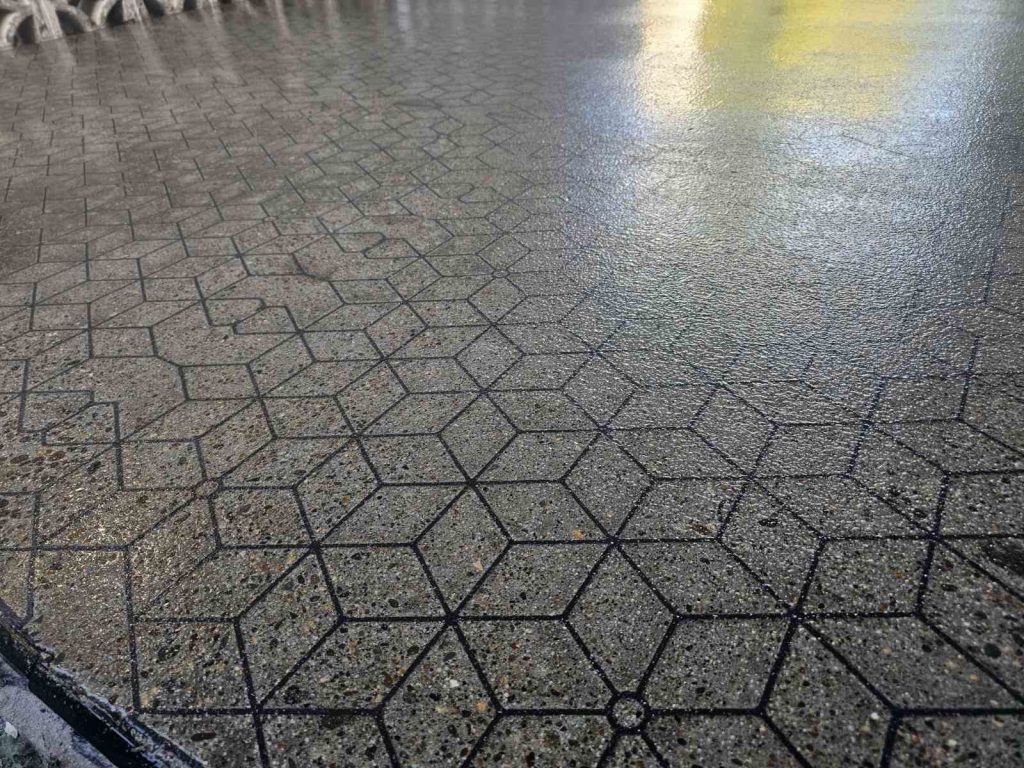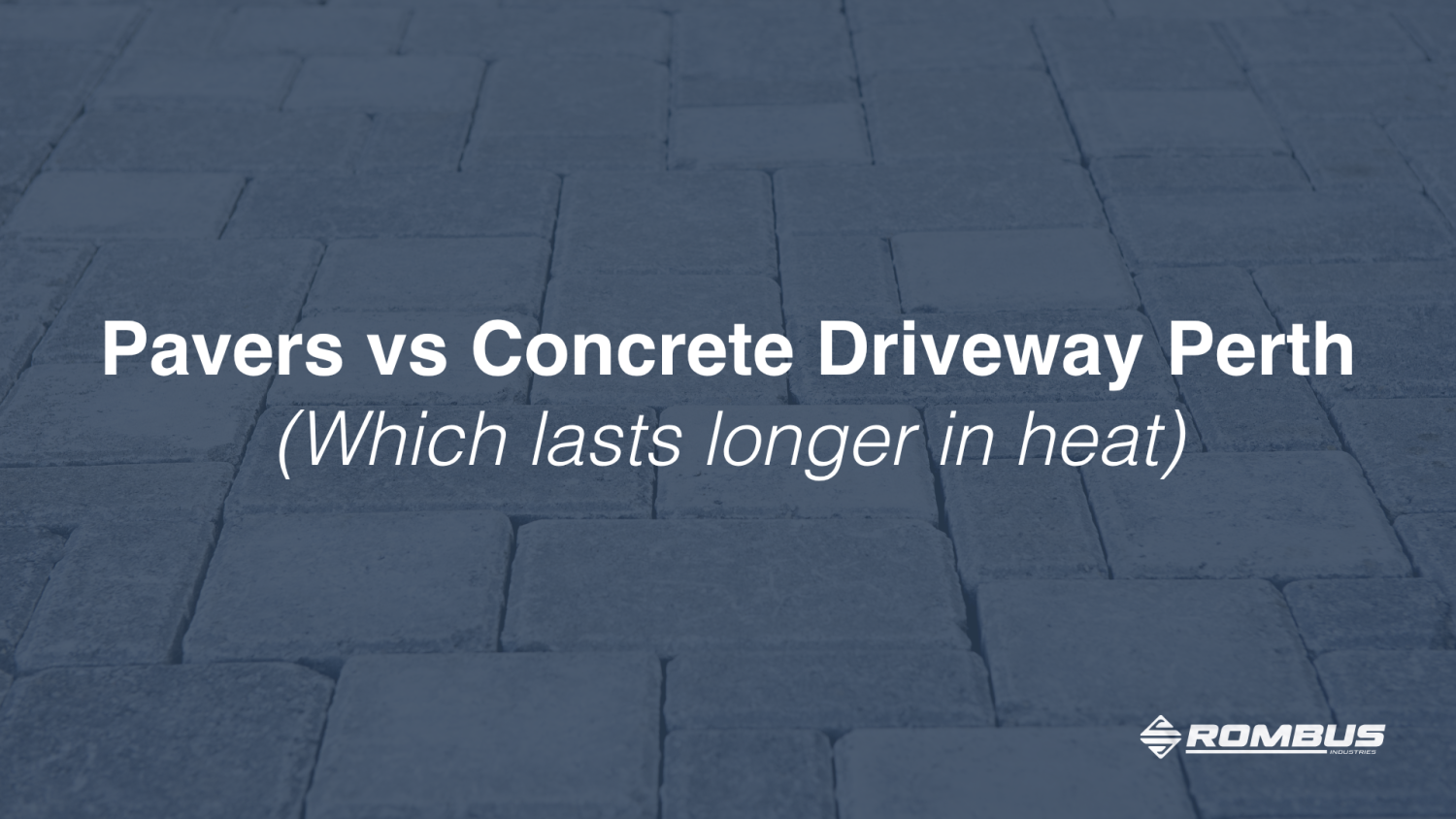Western Australia’s heat is unforgiving. Summer days often push past 40°C, and both pavers and traditional concrete slabs expand, shift, and crack under that pressure.
If you are choosing between the two, the truth is that both materials have strengths and both have weaknesses when exposed to Perth’s dry, high UV climate.
Here is how each performs and where newer hybrid systems like Rombus are changing what is possible.
Concrete Driveways: Solid but Stressed
A concrete driveway looks clean and permanent until the first summer rolls in.
The pros:
- Strong under compression and heavy vehicles
- Smooth and low maintenance finish
- Can be coloured and finished to suit any design
The cons:
- Expands and contracts with temperature changes
- Cracks when the subgrade moves or dries out
- Retains heat, warming surrounding areas
- Repairs are expensive and often visible
Concrete is a rigid system. It works well when the ground stays stable and the temperature remains consistent. But in Perth, with reactive clay soils and extreme heat, slabs naturally develop cracks along joints or across the surface even when installed correctly.
Pavers: Flexible but High Maintenance
Pavers are often seen as a more forgiving option. Because they are made of small individual units, they can shift slightly with soil movement and temperature changes, reducing large cracks.
The pros:
- Adapts to minor ground movement
- Damaged units can be replaced individually
- Allows better drainage
- Complements landscaping with a natural look
The cons:
- Sand joints loosen over time
- Weeds and ants can move in
- Dark colours absorb heat
- Needs periodic re-leveling and joint refilling
Pavers handle movement better than concrete but require frequent maintenance to keep a level and sealed surface. Lighter coloured pavers perform better in Perth’s heat, but UV exposure and movement eventually cause fading or shifting.
The Hybrid Option: Rombus Flexible Concrete Pavement

Both concrete and pavers have limitations. Rombus was developed to remove the trade off between strength and flexibility.
Rombus uses a 1 m² modular grid system made from 96 percent recycled polypropylene. Each grid is 40 millimetres thick and filled with a 32 MPa Rombus approved concrete mix, creating a surface that performs like concrete under load but behaves like pavers under stress.
| Factor | Concrete Slab | Pavers | Rombus Flexible Pavement |
|---|---|---|---|
| Heat Resistance | High thermal mass retains heat | Variable based on colour | Low thermal mass, dissipates heat faster |
| Movement Tolerance | Poor | Good | Excellent |
| Maintenance | Difficult | Frequent | Minimal |
| Durability | High but cracks | Moderate | Very high, tested beyond 10,000 tonnes per m² |
| Sustainability | High carbon footprint | Moderate | 96 percent recycled material and reduced concrete use |
The Verdict: Smarter Surfaces Win in the Heat
If you are deciding between pavers and concrete, it depends on what you value most.
- For short term aesthetics and flexibility, pavers perform well but need upkeep.
- For strength and longevity, concrete works but expect visible cracking over time.
If you want a surface that stays cooler, resists cracking, and lasts longer, Rombus’ hybrid pavement is built for exactly that. Designed for Australian heat, heavy machinery, and variable ground conditions, it is the next generation of paving performance.
Built for Perth Conditions
Perth’s UV levels, sandy soils, and temperature swings make it one of the toughest environments for driveways. Rombus is designed, tested, and manufactured locally to perform in those conditions. Each grid is lightweight, easy to install, and strong enough for commercial and residential use.
